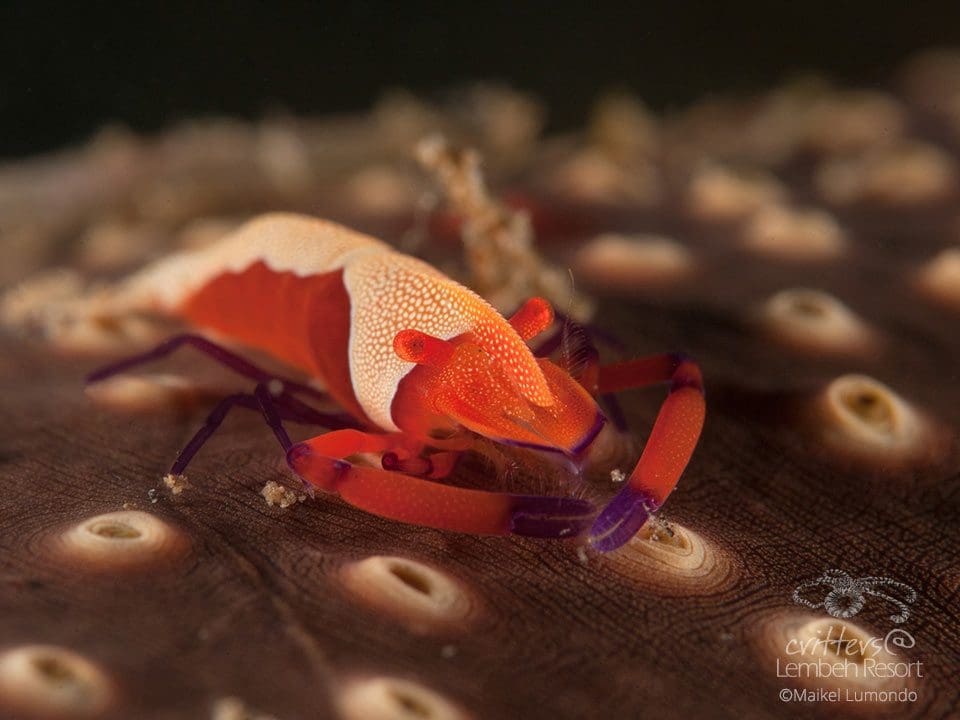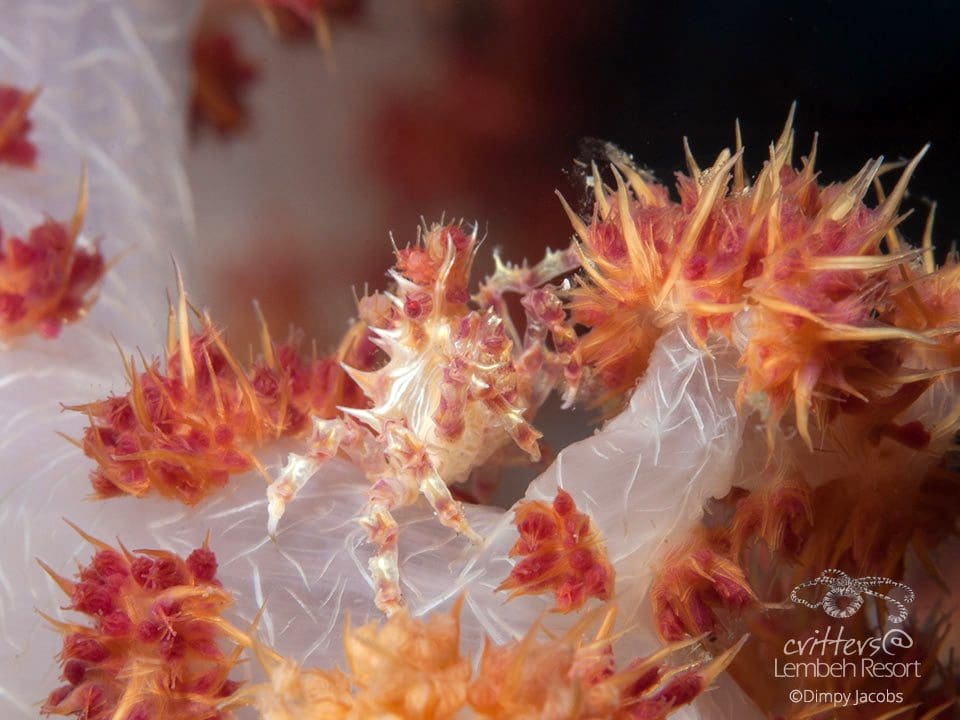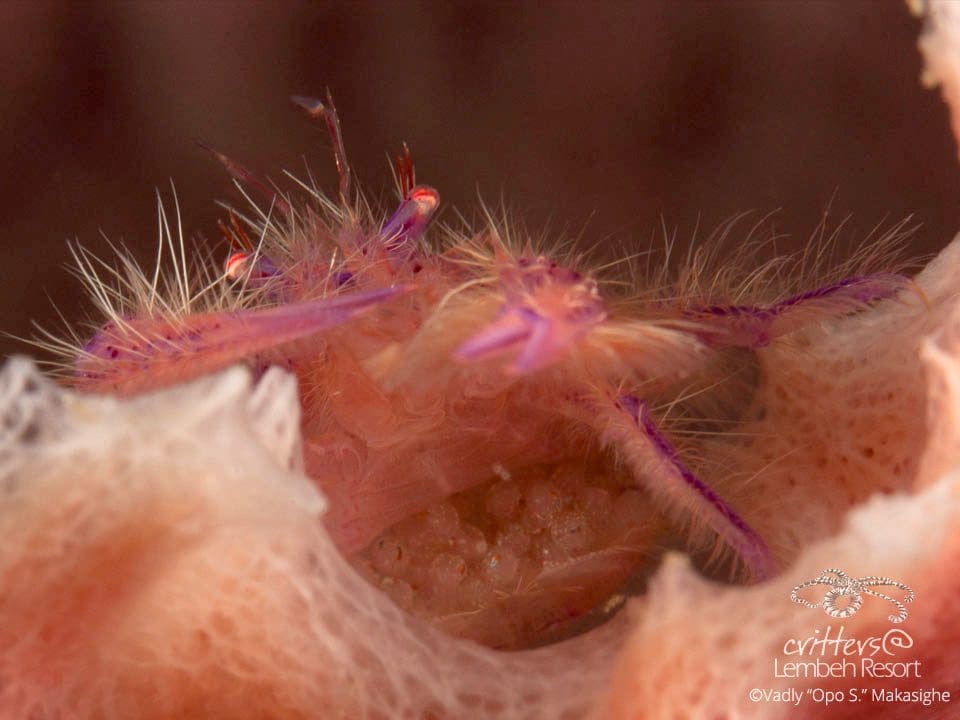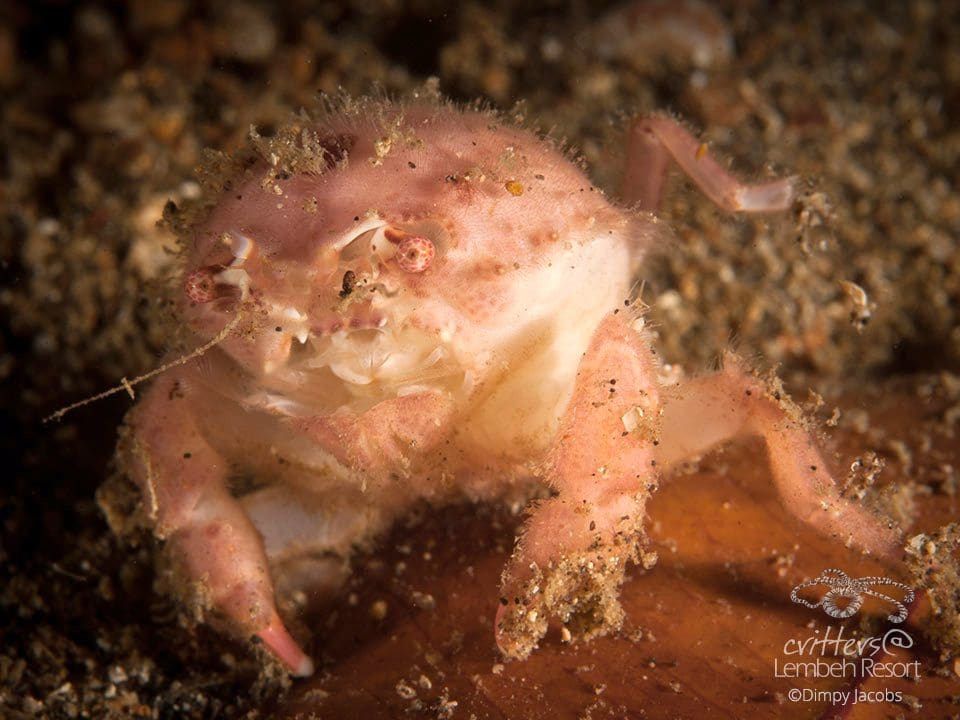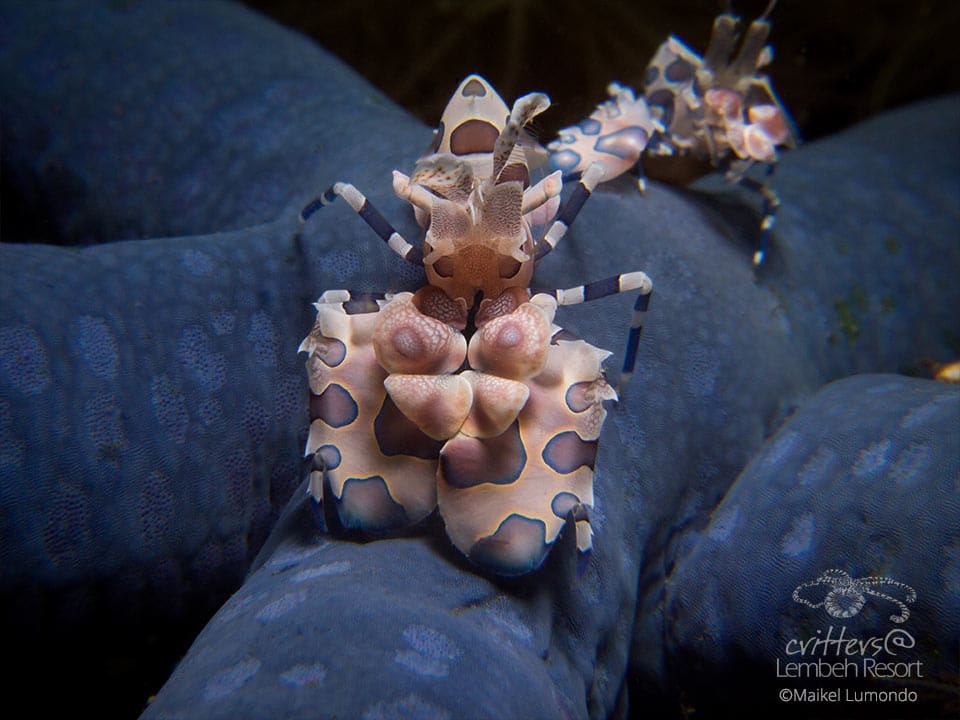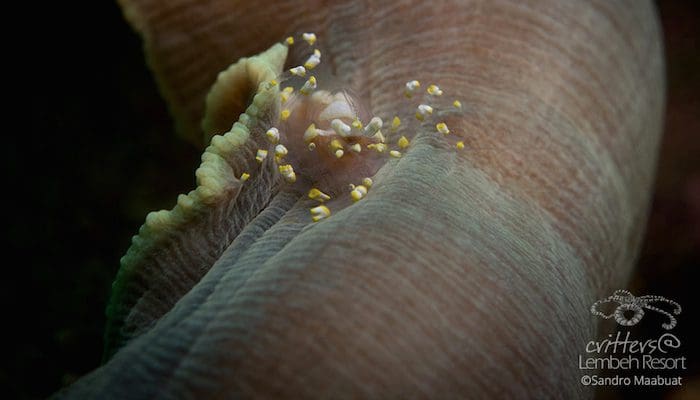
Crustacean Station – Part II
Besides their tremendous diversity of body shapes and colors, the crustaceans of Lembeh Straits’ dive sites are remarkable for a number of other characteristics as well. While having a hardened exoskeleton (frequently fortified with calcium carbonate, just as with our skeletons) is great at providing protection from fish and other hungry predators, it also means all crustaceans are very constrained in their ability to grow. Imagine if you had to wear a knight’s armor (that you can’t just take off at night!) as a growing teenager, and you’ll start to get an idea of the conundrum of having a crustacean exoskeleton.
Fortunately, all crustaceans solve this problem by periodically molting their exoskeleton. This is commonly done in close synchronization with lunar phase (often at the full moon), at which time they actually shed their (too tight!) old skin. They then pump water into their bodies to expand the new skin, which may take several days to harden into a slightly larger exoskeleton. Anyone who has ever eaten « soft-shelled crabs » has taken advantage of this molting period, before the crab’s new skin has hardened. Because crustaceans are quite vulnerable during this period, most do their molting very privately in the safety of a cavity or burrow, and only re-emerge once their exoskeleton is hardened. For many crustaceans, this period of soft exoskeleton is also a time of reproduction, and is the only time the females can be mated with. Some amazing mating behavior can be observed when night diving around these times in Lembeh!
One advantage of molting is it means that if a crustacean breaks off a leg or antennae while escaping a predator, they can actually grow that leg back over a series of molts – quite a handy trick!
The strikingly-colored Emperor Shrimp feeds on detritus off the seafloor, but likes to travel in style; it is commensal with a range of sea cucumbers and larger nudibranchs, on which it can frequently be seen « hitching a ride »! Periclemenes imperator. Fortunately for us, sea cucumbers and nudibranchs are not in short supply on Lembeh’s black sand muck diving sites!
Emperor Shrimp (Periclimenes imperator) Photo by dive guide Maikel Lumondo – critters at Lembeh Resort
The soft coral or « candy crab » is covered with sharp tubercles and does an excellent job of matching the Dendronepthya soft corals on which it lives. Though occasionally solitary, sharp eyes will often discern a number of individuals on a single soft coral colony. Because of their attractive colors these crabs make great photography subjects and our onsite Photo Pro is always available to give advice on the best techniques to capture great macro images of them.
Candy Crab (Hoplophrys oatesii) – Photo by Marine biologist Dimpy Jacobs – critters at Lembeh Resort
The dark-kneed hermit crab is another common hermit found on the muck diving sites of the Lembeh Strait; it’s easily distinguished by its long white to yellow eye stalks and dark pupils as well as the dark patch above its multiple « knees ». When they outgrow their shell they hunt for a larger one and do a « quick swap ».
Dark Knee Hermit Crab (Dardarnus lagopodes) – Photo by dive guide Abner Mangole – critters at Lembeh Resort
Lembeh Strait’s dive sites are bursting with a range of mantis shrimp species. Mantis shrimps are only distantly related to their shrimpy cousins; they differ significantly in having raptorial appendages (reminiscent of a praying mantis) instead of the pincer-like claws of « normal » shrimp. Within the stomatopods or mantis shrimp family, there are actually two main functional groups: the « smashers » and the « spearers ». Smashers are typically smaller (though the well-known peacock mantis is the largest of the smashers) and live in coral rubble cavities and have hardened calcified heels on their raptorial appendages that they use to smash open snails, cowries, small clams or the carapaces of crabs and shrimps. By comparison, the spearers are typically much larger (up to 40cm in length) and have a series of sharp teeth on their raptorial appendages that they use to impale their soft-bodied prey (fish and shrimp). The tiger mantis shrimp pictured here is a spearer that lives in large u-shaped burrows in the sand that may stretch for up to 3-5m below the sand. Unidentified Lysiosquillid.
Tiger Mantis Shrimp (Lysiosquilla maculata) – Photo by Yousef T. Alshekalii
The hairy squat lobster (shown here guarding eggs) is found exclusively in the grooves of giant barrel sponges and displays a beautiful pink or purple color. The scientific name Lauriea siagani bears the last name of renowned Bali-based dive guide Wally Siagan. The specialist dive guides and spotters at critters@Lembeh Resort know which barrel sponges are best for finding these colorful critters!
Hairy Squat Lobster with eggs (Lauriea sagiani) – Photo by dive guide Vadly « Opo. S » Makasighe – critters at Lembeh Resort
Sponge crabs in the family Dromiidae have the amusing behavior of carrying sponges (or occasionally colonial ascidians) over the top of their carapace with their rear legs – resulting in a very convincing camouflage! Occasionally the sponge is significantly larger than the crab, giving the appearance of a walking sponge that invariably causes a double take from observant divers. These crabs are just one of the many highlights of night diving in the Lembeh Strait!
Red Sponge Crab (Lewindrmia unidentata) – Photo by Marine biologist Dimpy Jacobs – critters at Lembeh Resort
As with most of the commensal shrimps in the sub-family Pontoniinae, the corallimorph shrimp is nearly always found in association with a single host – in this case the corallimorph Rhodactis rhodostoma. Often found in pairs, these shrimps make excellent macro photography objects and are a favorite with the guides at critters@Lembeh Resort. Pliopontonia furtiva
Hidden Corallimorph Shrimp (Pilopontonia furtiva) – Photo by dive guide Sandro Maabuat – critters at Lembeh Resort
One of the most beautiful and distinctive crustaceans found at the dive sites of the Lembeh Strait, the harlequin shrimp typically occurs in monogamous pairs and feeds cooperatively on a variety of sea stars, including the common blue sea star Linckia laevigata as well as occasionally the crown-of-thorns starfish Acanthaster plancii. The pair will turn a starfish upside down and then may either cut off an arm with their strong claws or actually dissect the sea star and consume the tube feet and guts – sometimes keeping their prey alive for several days as they consume it from the tips of the arms to the central disc. These beautiful shrimps with their stunning color patterns are a treat for underwater macro photographers.
Harlequin shrimp (Hymenocera elegans) – Photo by dive guide Maikel Lumondo – critters at Lembeh Resort


